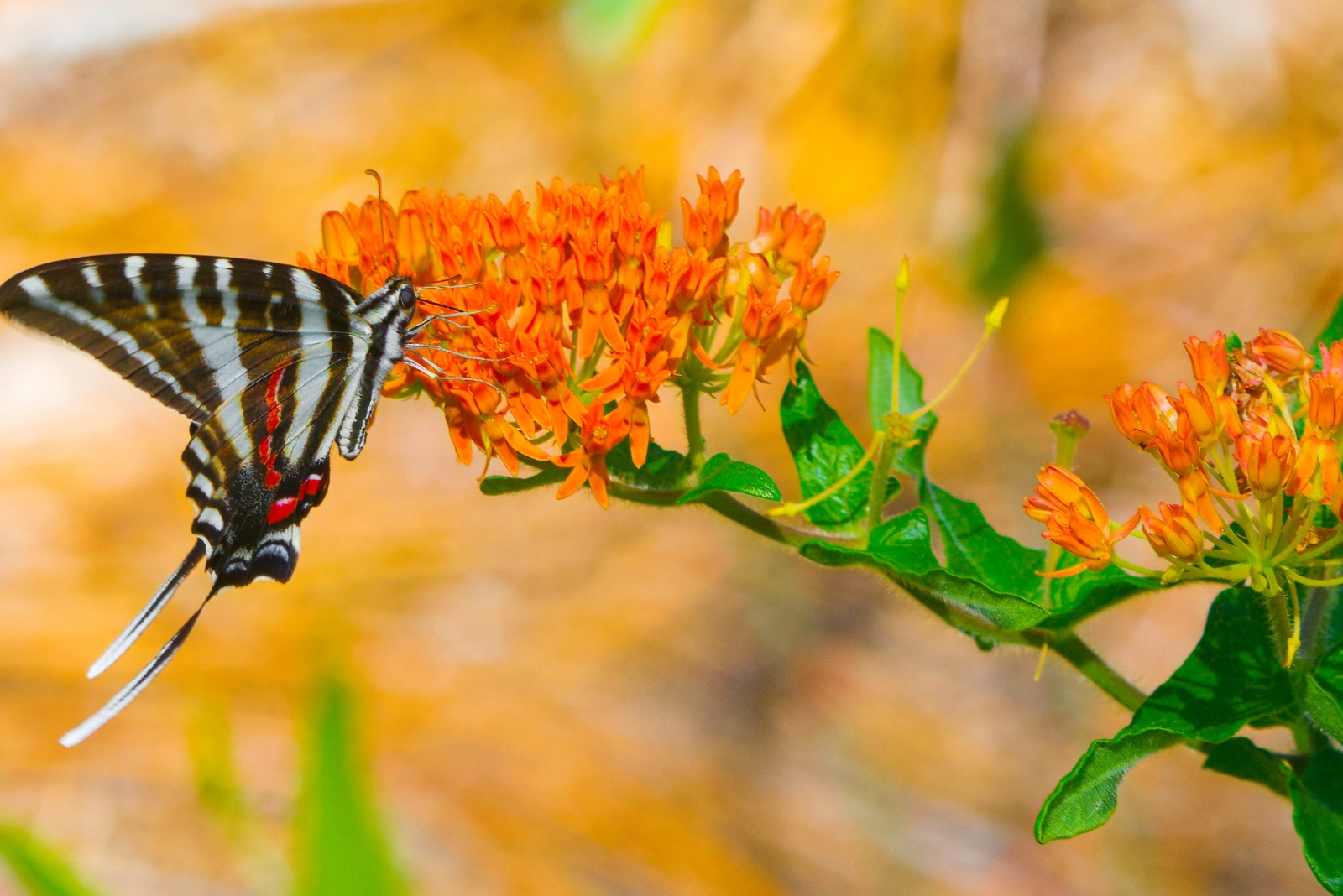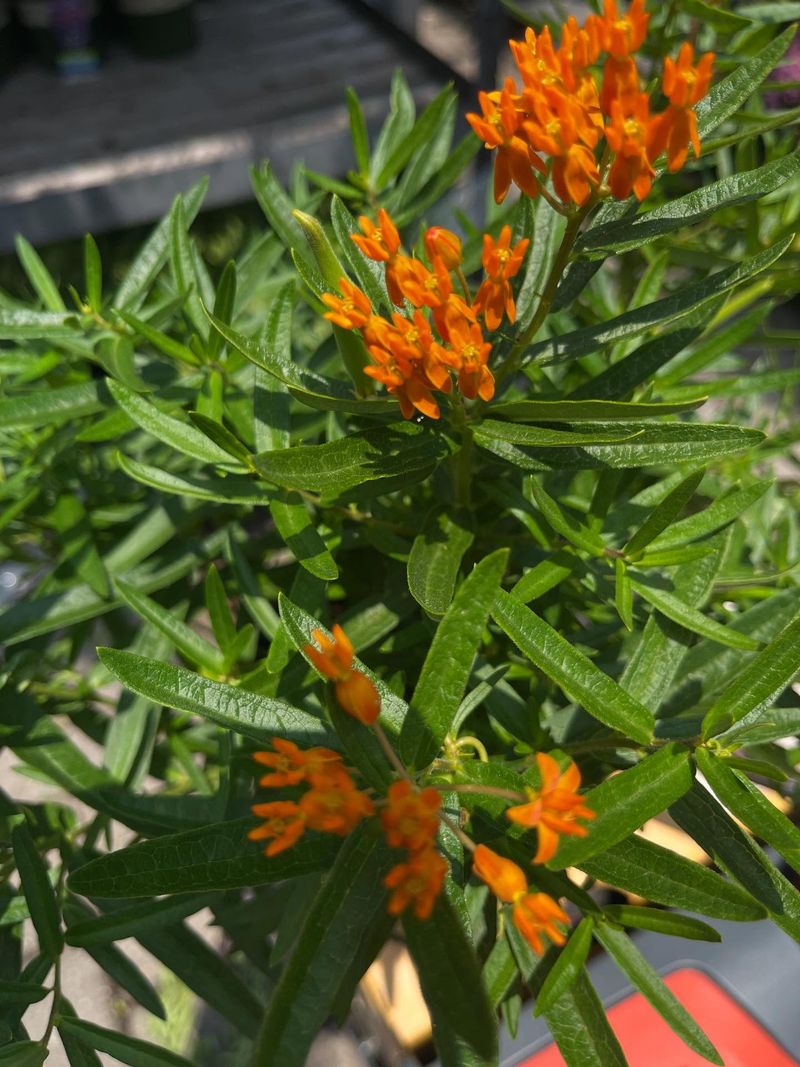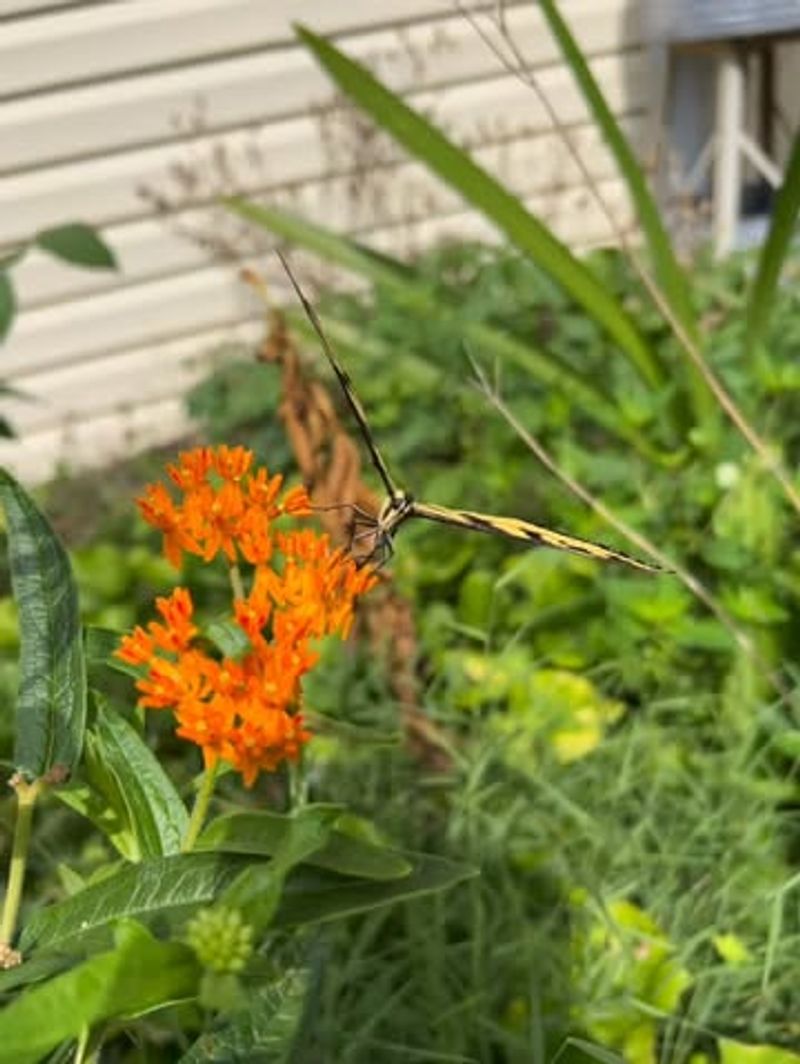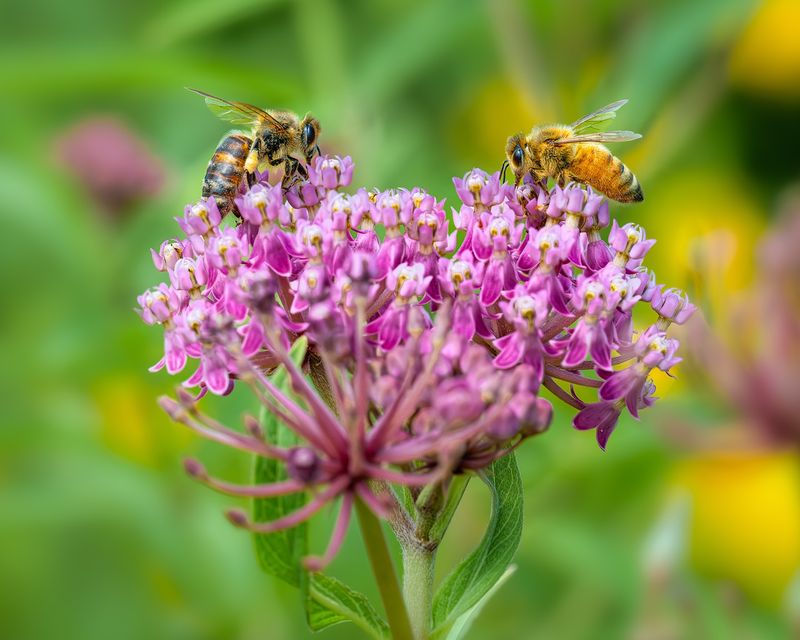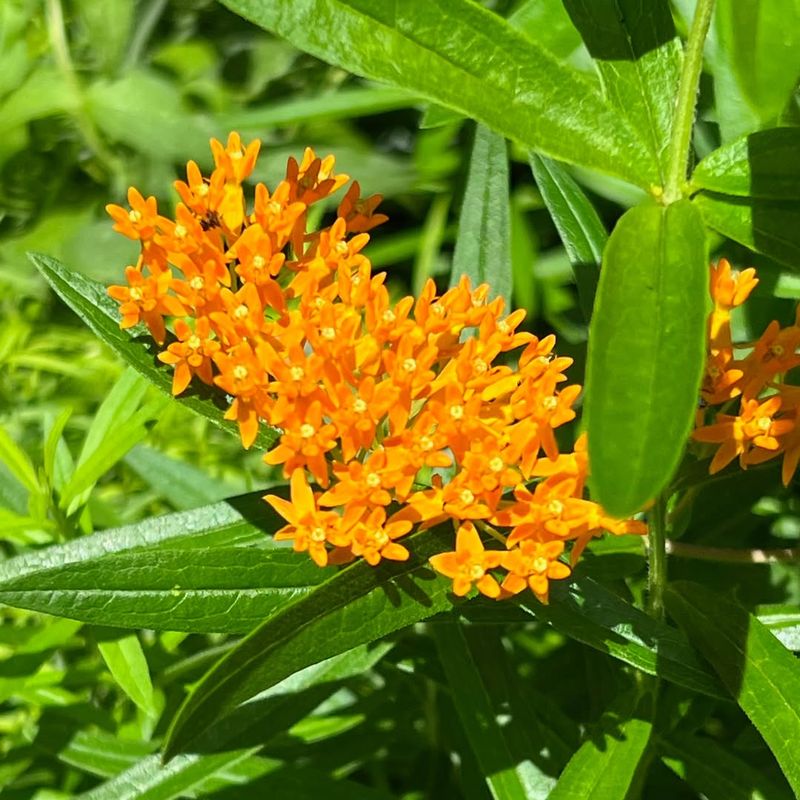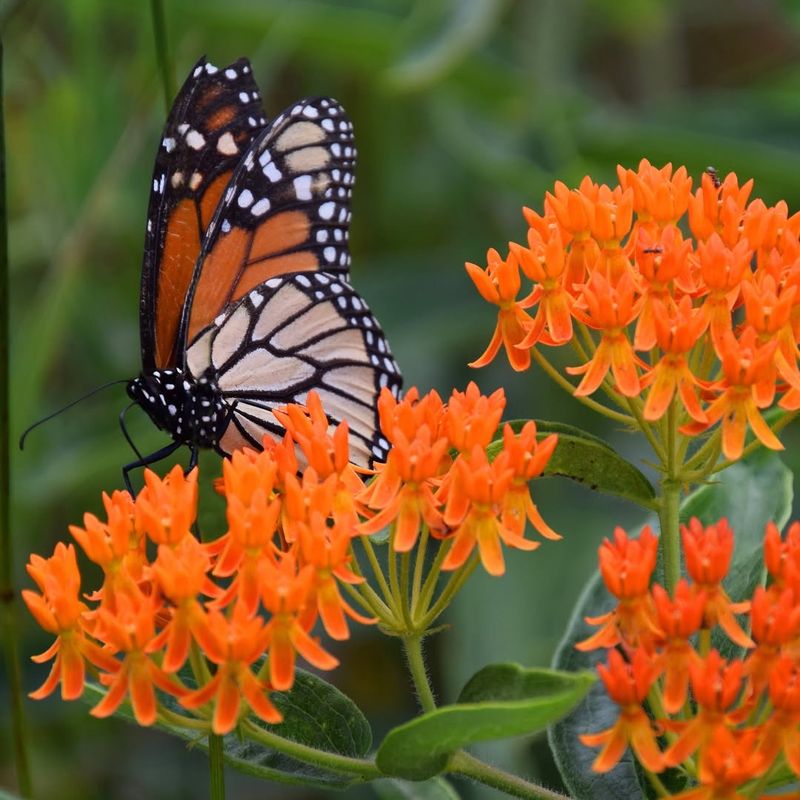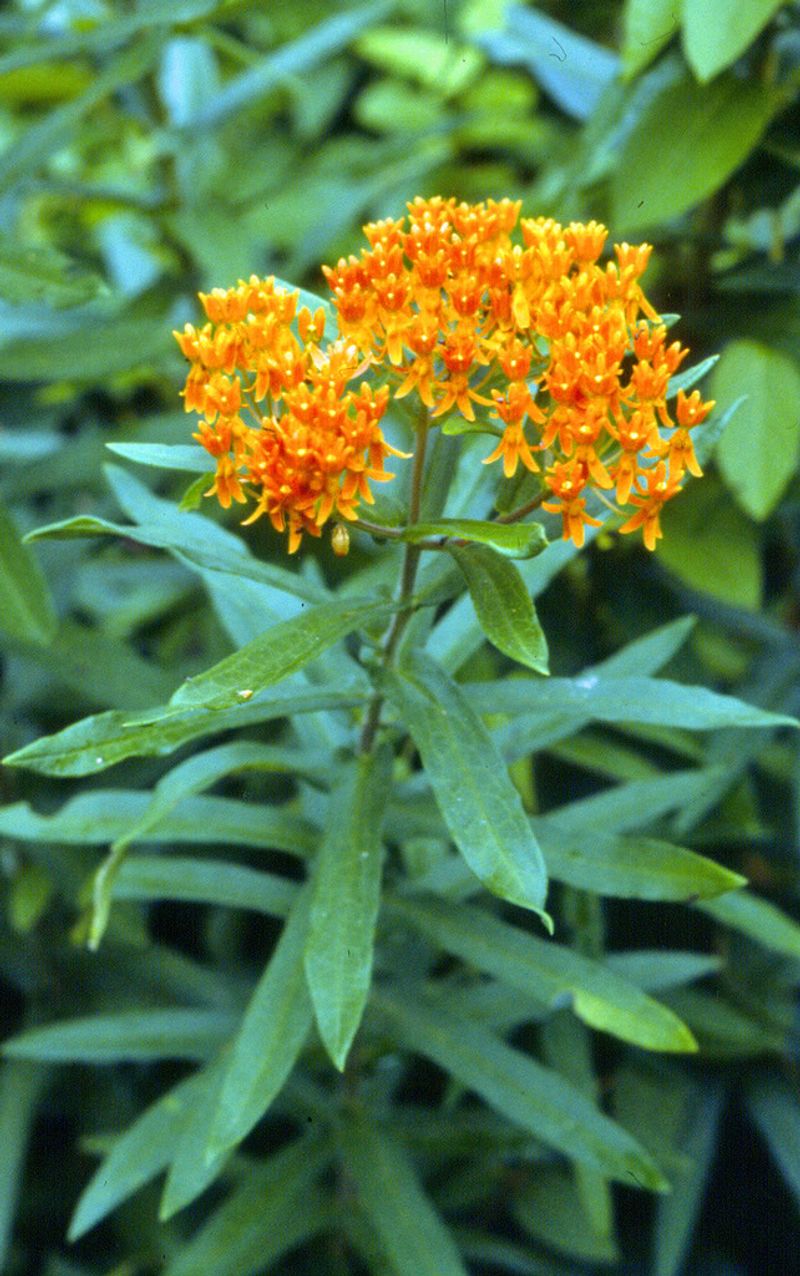If you’ve ever wanted to see your garden flutter with color, this native plant is pure magic. The Butterfly Milkweed is like a welcome mat for monarchs and other butterflies, bursting with bright orange blooms they can’t resist.
It’s tough, low-maintenance, and thrives right in Connecticut soil. Give it a sunny spot, and you’ll have wings dancing around your yard in no time.
1. Monarch Butterflies Depend On It For Survival
Monarch caterpillars can only eat milkweed leaves, making this plant absolutely essential for their life cycle. Without milkweed, monarchs cannot reproduce or complete their incredible migration journey.
Connecticut gardeners who plant butterfly milkweed directly contribute to saving this threatened species. The bright orange blooms signal a safe haven where monarchs can lay eggs and ensure the next generation thrives in your backyard sanctuary.
2. Vibrant Orange Blooms Create Stunning Garden Color
Few native plants can match the eye-catching brilliance of butterfly milkweed’s fiery orange flower clusters. Blooming from June through August, these vibrant blossoms add a bold splash of color that stands out in any Connecticut landscape.
The flat-topped flower heads create dramatic visual impact whether planted alone or grouped together. Gardeners love how the intense orange hue complements other summer perennials while maintaining its showstopping presence throughout the growing season.
3. Thrives In Connecticut’s Climate Without Fuss
Butterfly milkweed loves Connecticut’s summers and handles our winters like a champ. Once established, it requires minimal watering and tolerates our region’s temperature swings beautifully.
This tough native perennial comes back year after year, growing stronger with each season. Connecticut gardeners appreciate that it doesn’t need constant attention, fertilizers, or special soil amendments to flourish and produce abundant blooms that butterflies adore.
4. Attracts More Than Just Monarchs To Your Yard
While monarchs steal the spotlight, butterfly milkweed welcomes swallowtails, fritillaries, skippers, and dozens of other butterfly species. Hummingbirds and beneficial bees also flock to the nectar-rich flowers throughout summer.
Connecticut nature lovers enjoy watching this diverse parade of pollinators visiting their gardens daily. The plant essentially becomes a living wildlife observatory, providing endless entertainment and supporting local biodiversity in ways few other plants can match.
5. Drought Tolerant Once Roots Are Established
After its first season, butterfly milkweed develops deep taproots that seek moisture far below the surface. Connecticut’s occasional dry spells won’t faze this resilient native once it settles in.
Homeowners trying to conserve water will appreciate how this plant keeps blooming even when rainfall is scarce. Its drought tolerance makes it perfect for low-maintenance landscapes while still delivering spectacular color and butterfly activity all summer long.
6. Deer Usually Leave It Alone In Your Garden
Connecticut gardeners battling deer damage will rejoice knowing butterfly milkweed contains compounds that make it unpalatable to browsing wildlife. Deer typically walk right past it to munch on tastier options.
The milky sap contains toxins that protect the plant naturally without harming butterflies or beneficial insects. You can finally grow something beautiful without wrapping it in fencing or spraying repellents, making your gardening experience far more enjoyable and successful.
7. Easy To Grow From Seeds Or Transplants
Starting butterfly milkweed from seed is surprisingly simple and budget-friendly for Connecticut gardeners. Seeds germinate readily with basic cold stratification, or you can purchase nursery-grown plants for instant results.
Either method works wonderfully, giving beginners confidence and experienced gardeners flexibility. Plant it in full sun with decent drainage, and you’ll soon have a thriving butterfly magnet that returns reliably each spring with minimal effort required.

